Resources
Here you can search external resources from STOP Spillover's experts (tagged in blue) and resources developed by the STOP Spillover project (tagged in red).
We found 142 resources.
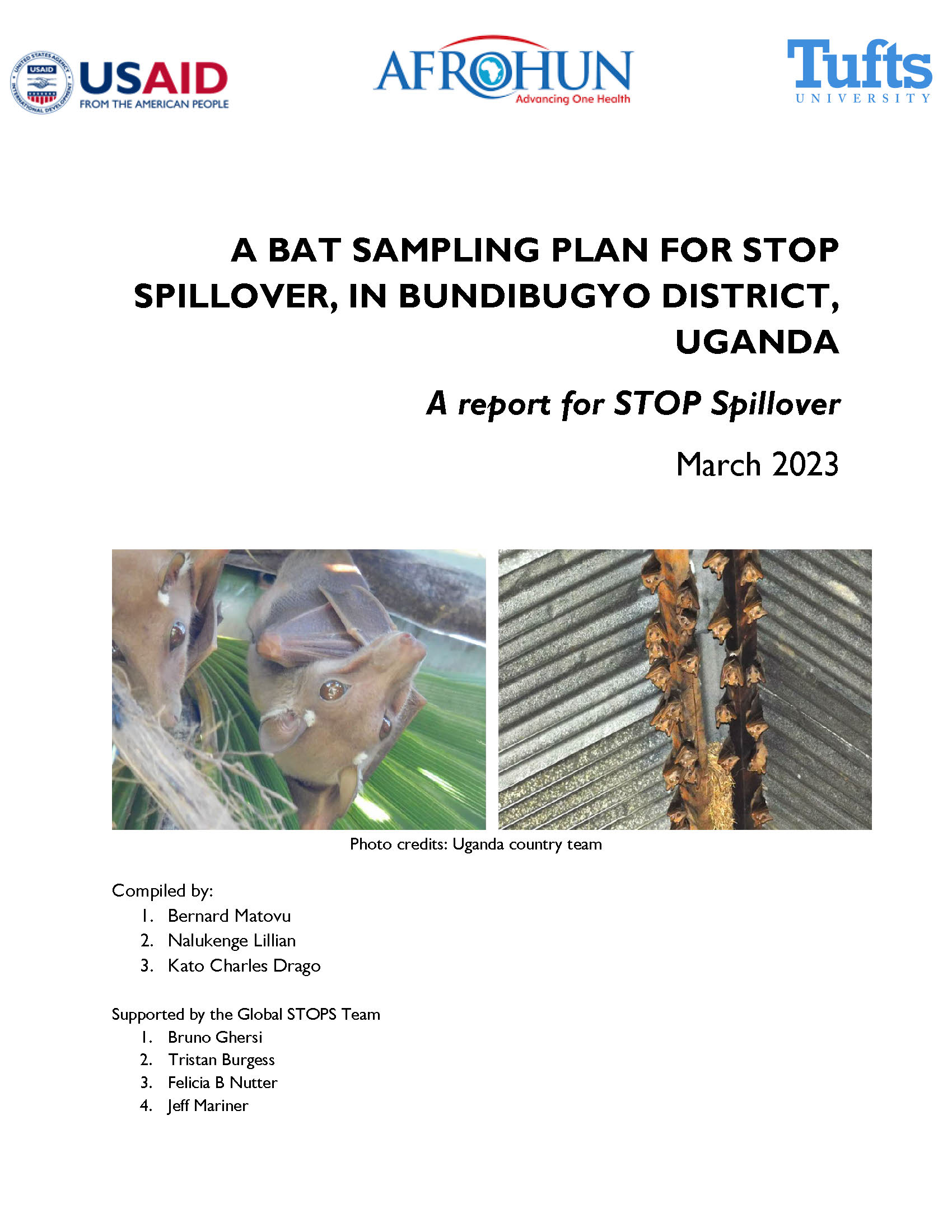
Bat Sampling Plan for STOP Spillover in Bundibugyo District, Uganda
This document describes the procedures used in Bundibugyo district to trap bats at the bat-human interface and collect specimens from trapped bats.
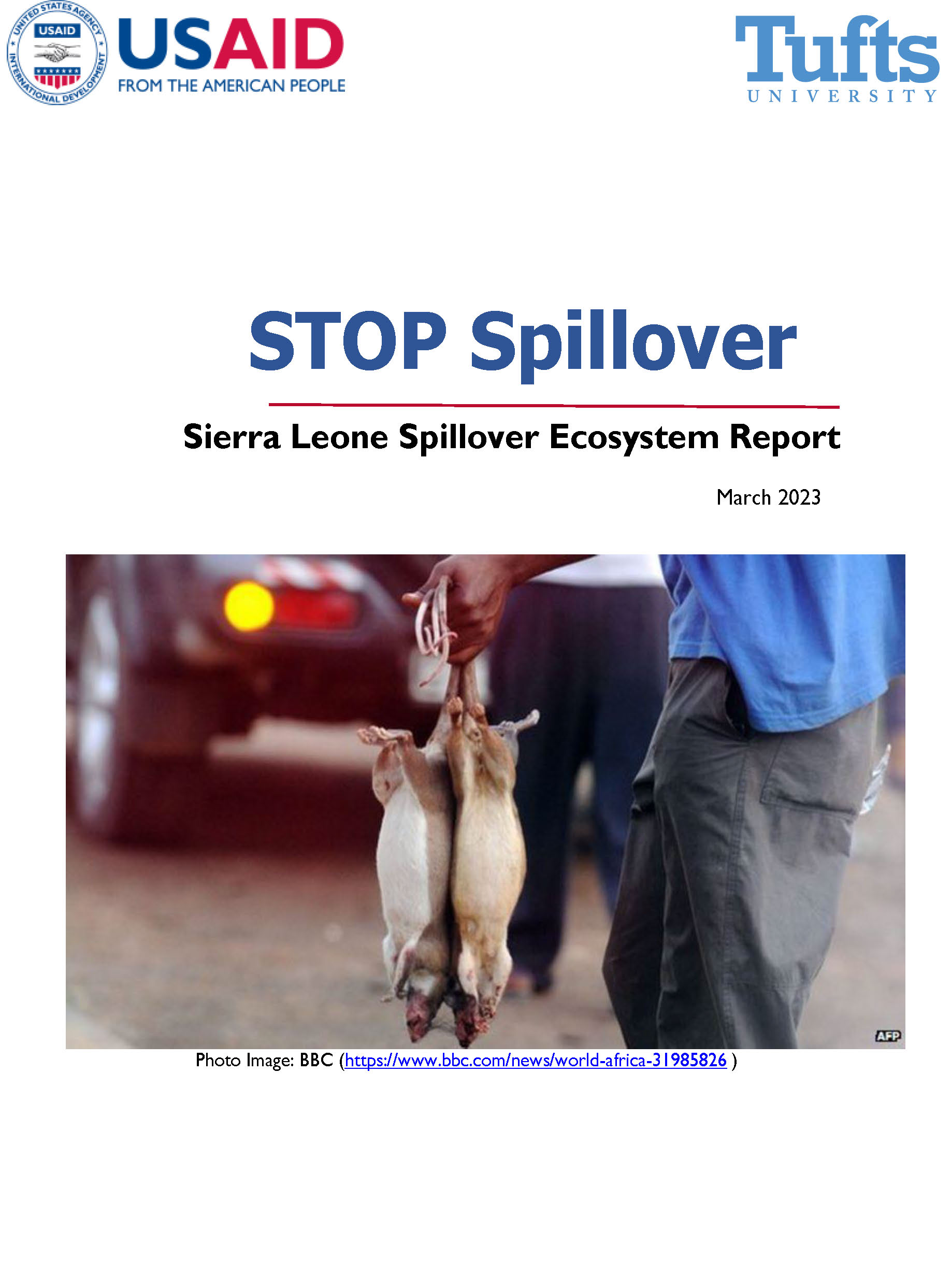
STOP Spillover Sierra Leone Spillover Ecosystem Report
This report is a comprehensive desktop review of what is known about zoonotic viral spillover, amplification, and spread in Sierra Leone. The review focuses on the complex interactions between society, the economy, the environment, and the transmission of zoonotic diseases. It was developed to inform the design and implementation of STOP Spillover project interventions in Sierra Leone.
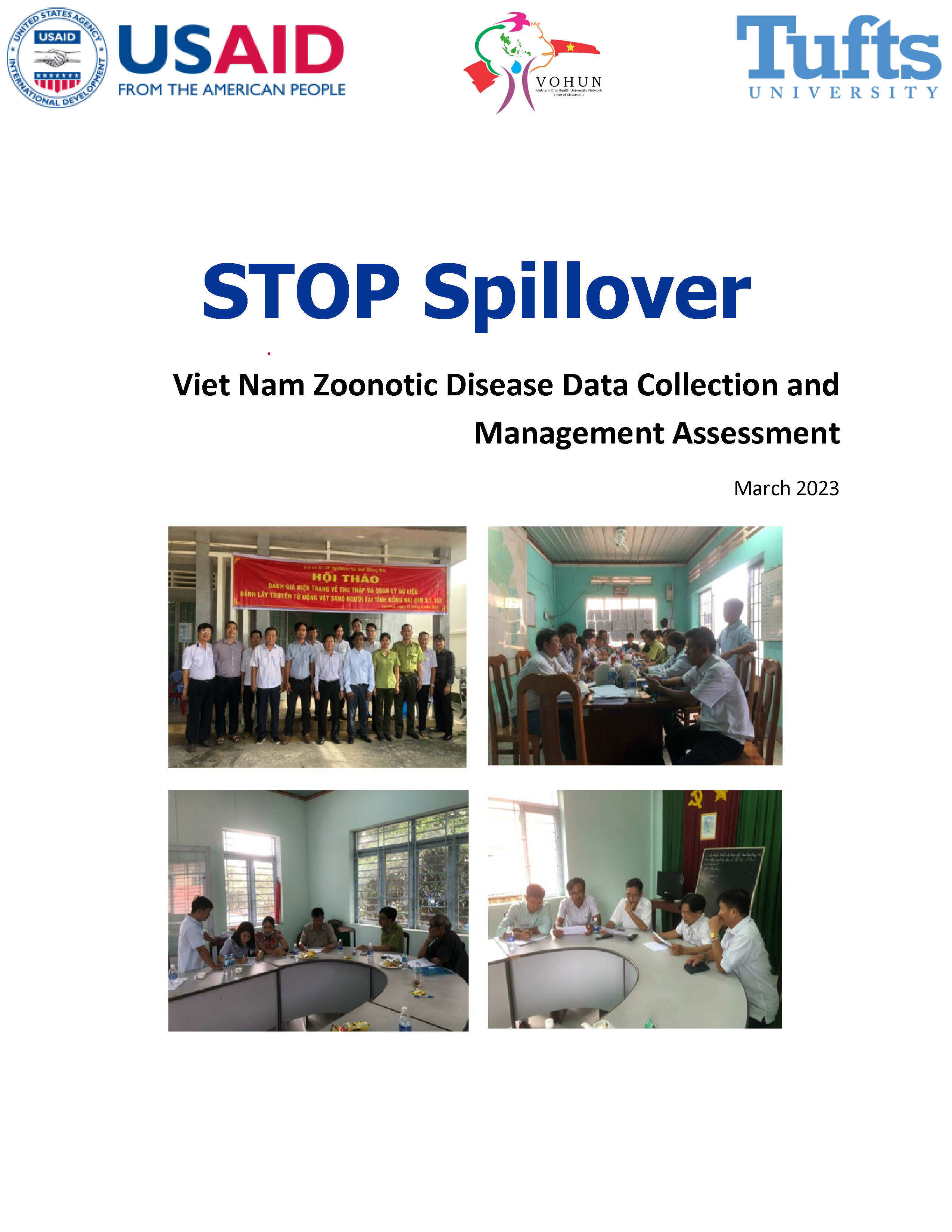
Viet Nam Zoonotic Disease Data Collection and Management Assessment
This report summarizes a study done by STOP Spillover to (1) assess the status of the collection, management, and sharing of zoonotic disease data in Dong Nai Province in Viet Nam; and (2) propose recommendations to improve the collection, management, and sharing of data on zoonotic disease in animal and human populations in Dong Nai Province.

Côte d’Ivoire Participatory Planning Using Outcome Mapping: Summary Report
Through outcome mapping (OM), a structured participatory tool that uses a collaborative context-specific process, spillover ecosystem stakeholders (both traditional and non-traditional) are empowered to identify and reduce zoonotic spillover risks at human-animal-environment interfaces and develop an outcome-oriented project action plan. This report outlines the details of the OM workshop activities in Côte d’Ivoire.
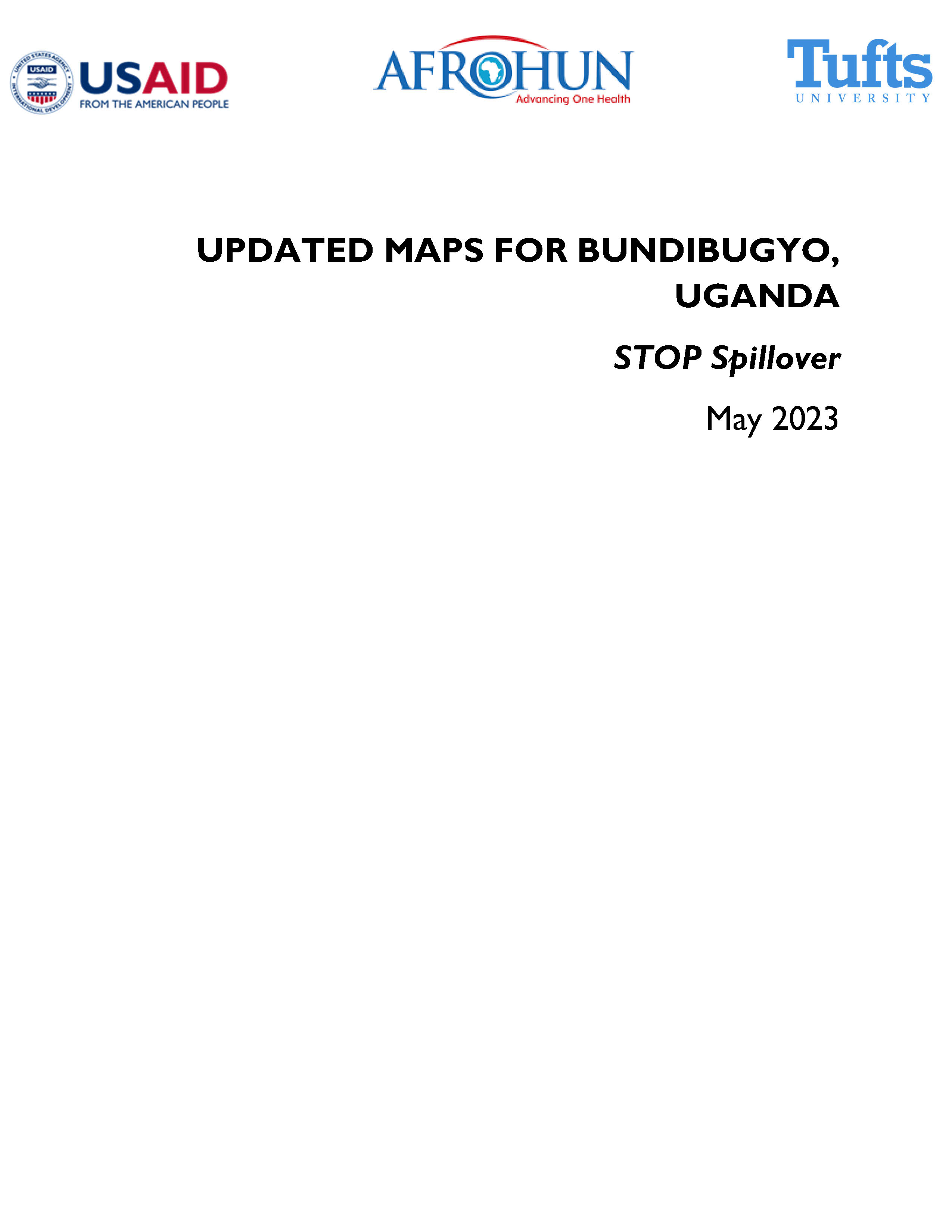
Updated Maps for Bundibugyo District, Uganda
These documents map all major human infrastructure interactions and bat nesting areas in and around bat-human interaction sites in Bundibugyo district.
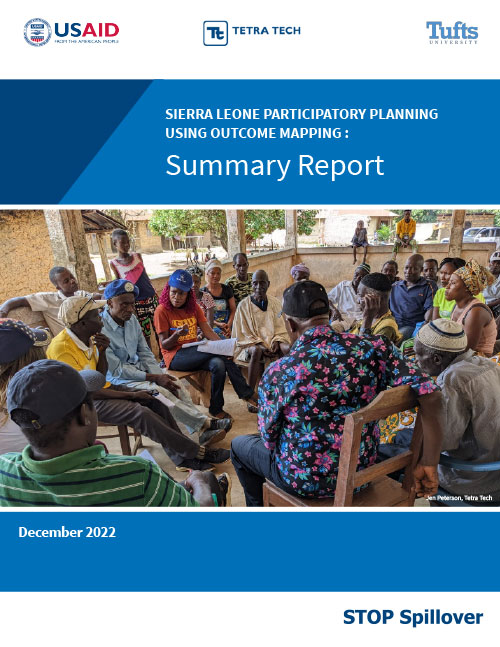
Sierra Leone Participatory Planning Using Outcome Mapping: Summary Report
Through outcome mapping (OM), a structured participatory tool that uses a collaborative context-specific process, spillover ecosystem stakeholders (both traditional and non-traditional) are empowered to identify and reduce zoonotic spillover risks at human-animal-environment interfaces and develop an outcome-oriented project action plan. This report outlines the details of the OM workshop activities in Sierra Leone.
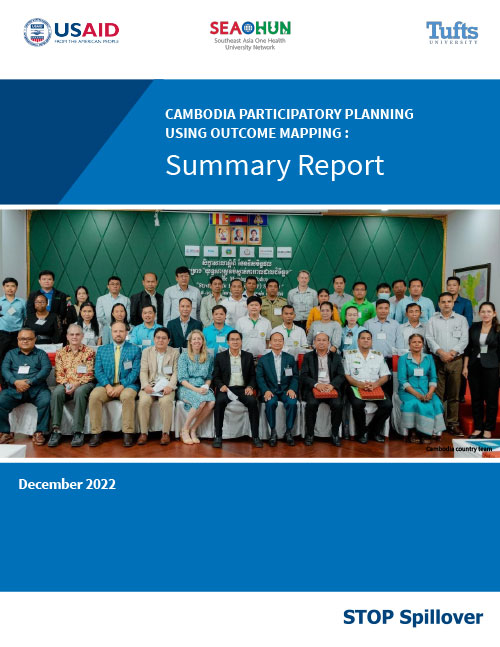
Cambodia Participatory Planning Using Outcome Mapping: Summary Report
Through Outcome Mapping (OM), a structured participatory tool that uses a bottom-up collaborative process, spillover ecosystem stakeholders (both traditional and non-traditional) are empowered to identify and reduce zoonotic spillover risks at human-animal-environment interfaces and develop an outcome-oriented project action plan. This report outlines the details of the OM workshop activities in Cambodia.
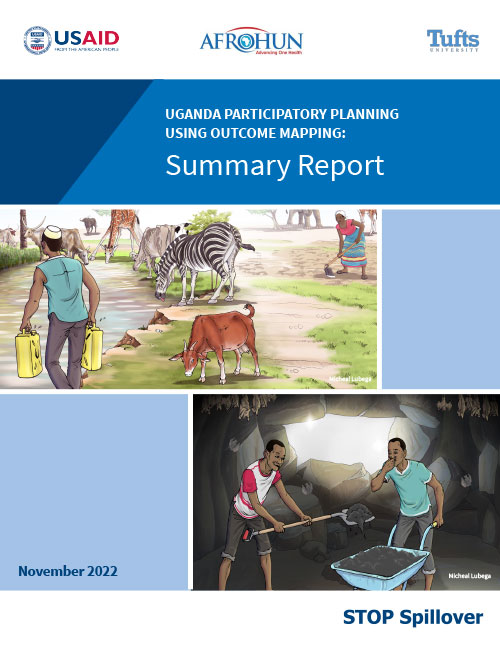
Uganda Participatory Planning Using Outcome Mapping: Summary Report
Through Outcome Mapping (OM), a structured participatory tool that uses a collaborative context-specific process, spillover ecosystem stakeholders (both traditional and non-traditional) are empowered to identify and reduce zoonotic spillover risks at human-animal-environment interfaces and develop an outcome-oriented project action plan. This report outlines the details of the OM workshop activities in Uganda.
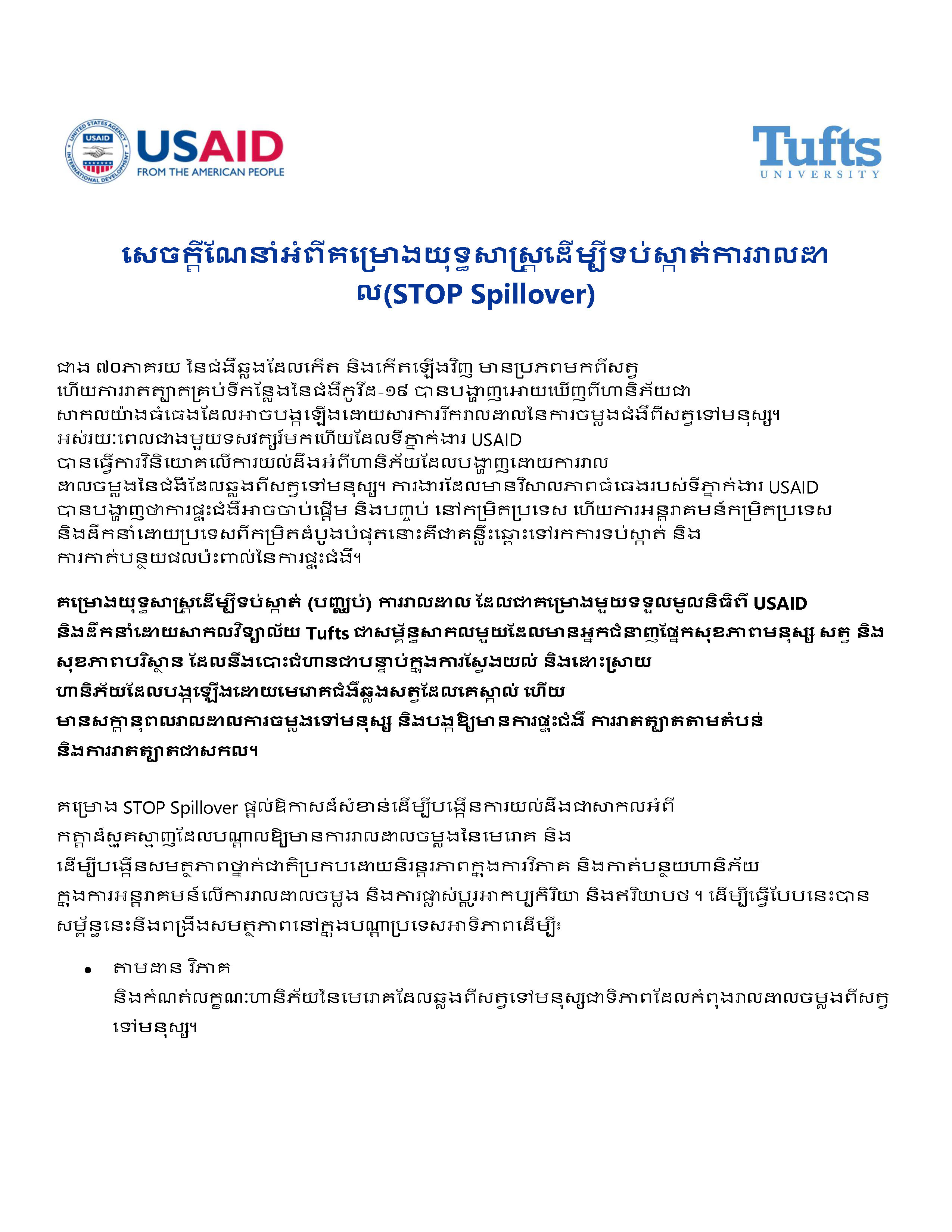
Introducing STOP Spillover (in Khmer)
This briefing book on Strategies to Prevent (STOP) Spillover outlines the project’s goals, the countries where it works, and its vision for priority countries across Africa and Asia to gain critical knowledge about spillover ecosystems and to refine and use that knowledge effectively, efficiently, and sustainably to reduce the risk of zoonotic viral spillover and spread.
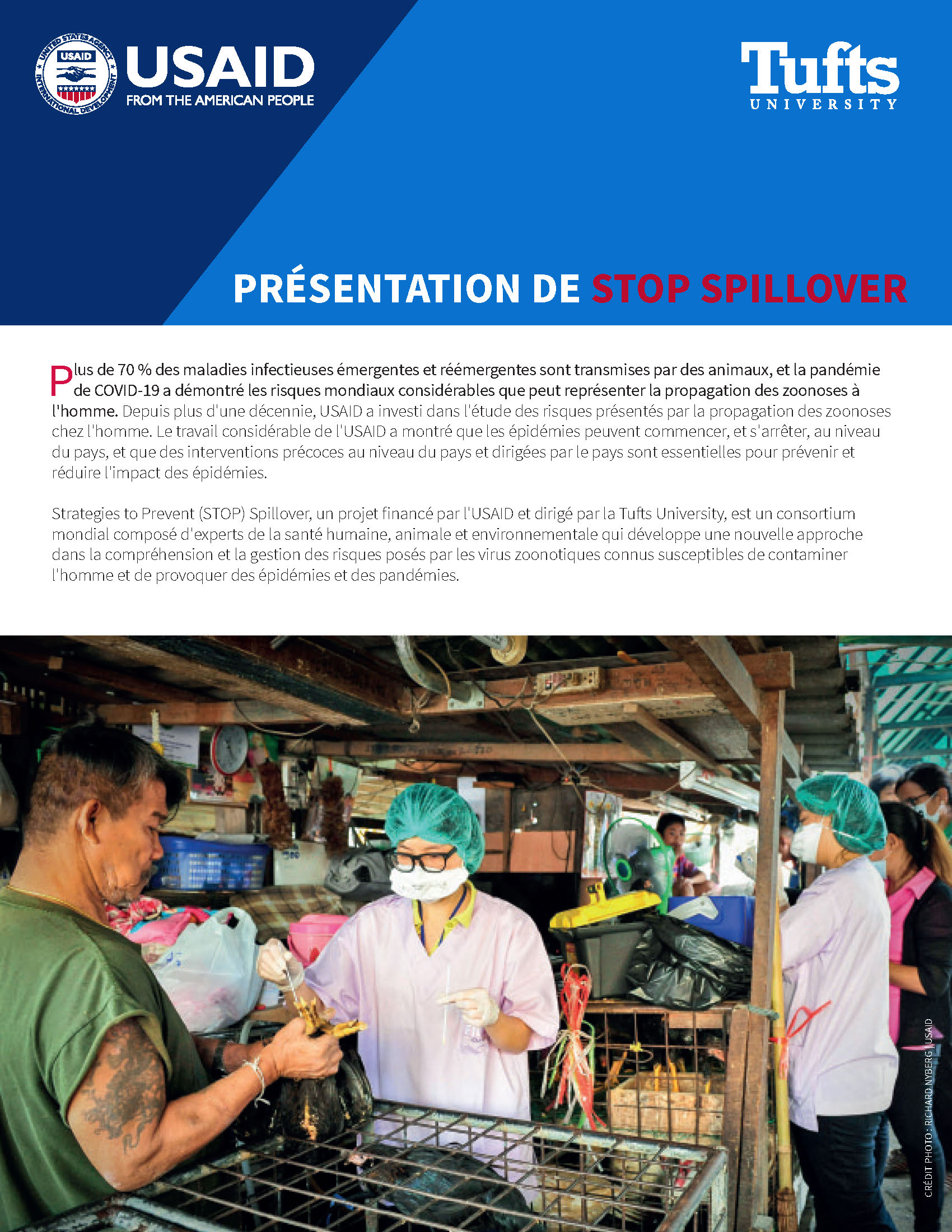
Présentation de STOP SPILLOVER
Strategies to Prevent (STOP) Spillover, un projet financé par l'USAID et dirigé par la Tufts University, est un consortium mondial composé d'experts de la santé humaine, animale et environnementale qui développe une nouvelle approche dans la compréhension et la gestion des risques posés par les virus zoonotiques connus susceptibles de contaminer l'homme et de provoquer des épidémies et des pandémies.
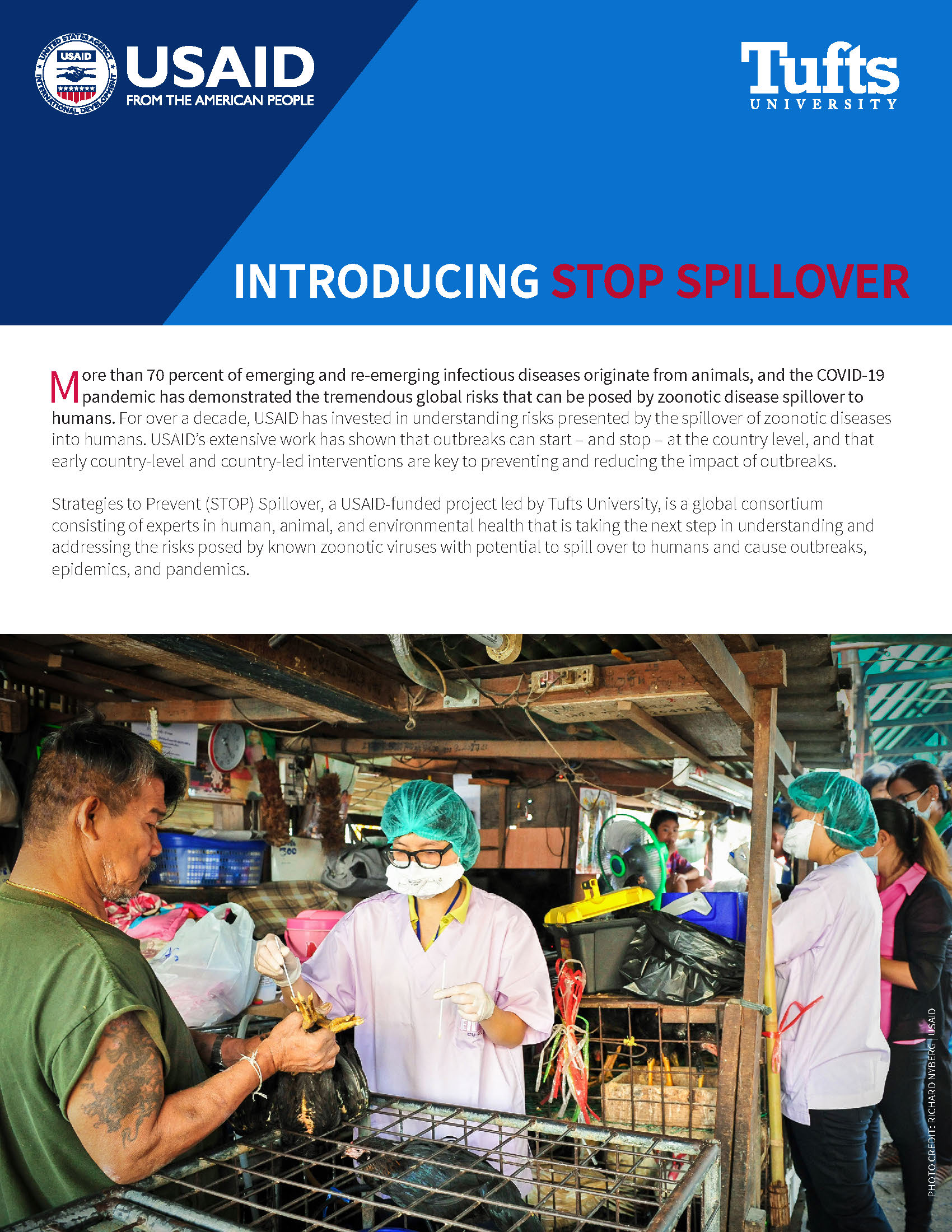
This briefing book on Strategies to Prevent (STOP) Spillover outlines the project’s goals, the countries where it works, and its vision for priority countries across Africa and Asia to gain critical knowledge about spillover ecosystems and to refine and use that knowledge effectively, efficiently, and sustainably to reduce the risk of zoonotic viral spillover and spread.
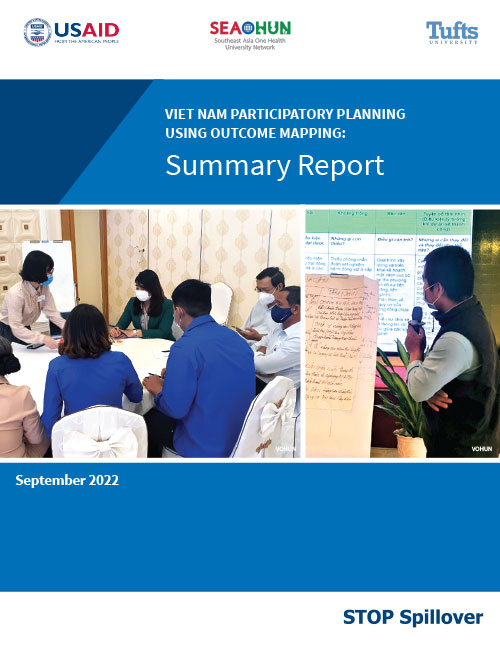
Viet Nam Participatory Planning Using Outcome Mapping: Summary Report
Through Outcome Mapping (OM), a structured participatory tool that uses a bottom-up collaborative process, spillover ecosystem stakeholders (both traditional and non-traditional) are empowered to identify and reduce zoonotic spillover risks at human-animal-environment interfaces and develop an outcome-oriented project action plan. This report outlines the details of the OM workshop activities in Viet Nam.
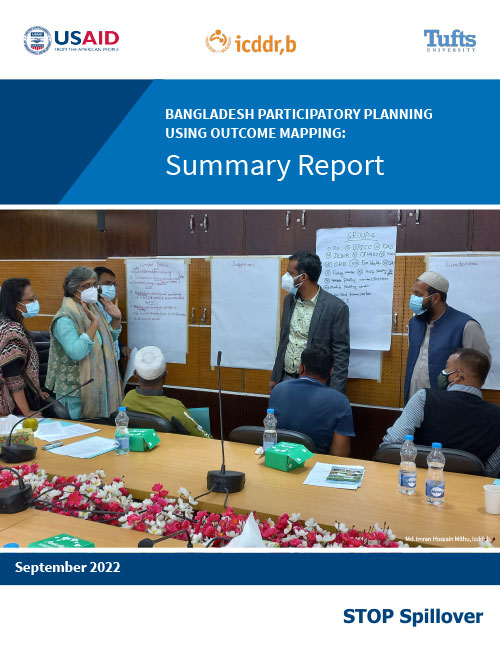
Bangladesh Participatory Planning Using Outcome Mapping: Summary Report
Through outcome mapping (OM), a structured participatory tool that uses a collaborative context-specific process, spillover ecosystem stakeholders (both traditional and nontraditional) are empowered to identify and reduce zoonotic spillover risks at human-animal-environment interfaces and develop an outcome-oriented project action plan. This report outlines the details of the OM activities held in Bangladesh.
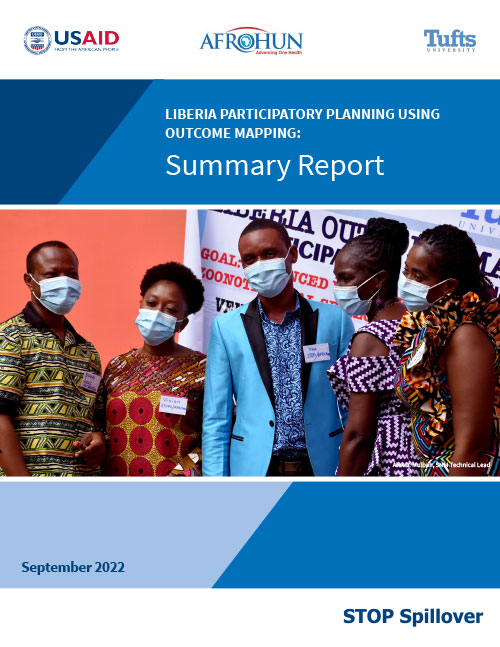
Liberia Participatory Planning Using Outcome Mapping: Summary Report
Through outcome mapping (OM), a structured participatory tool that uses a collaborative context-specific process, spillover ecosystem stakeholders (both traditional and non-traditional) are empowered to identify and reduce zoonotic spillover risks at human-animal-environment interfaces and develop an outcome-oriented project action plan. This report outlines the details of the OM workshop activities in Liberia.
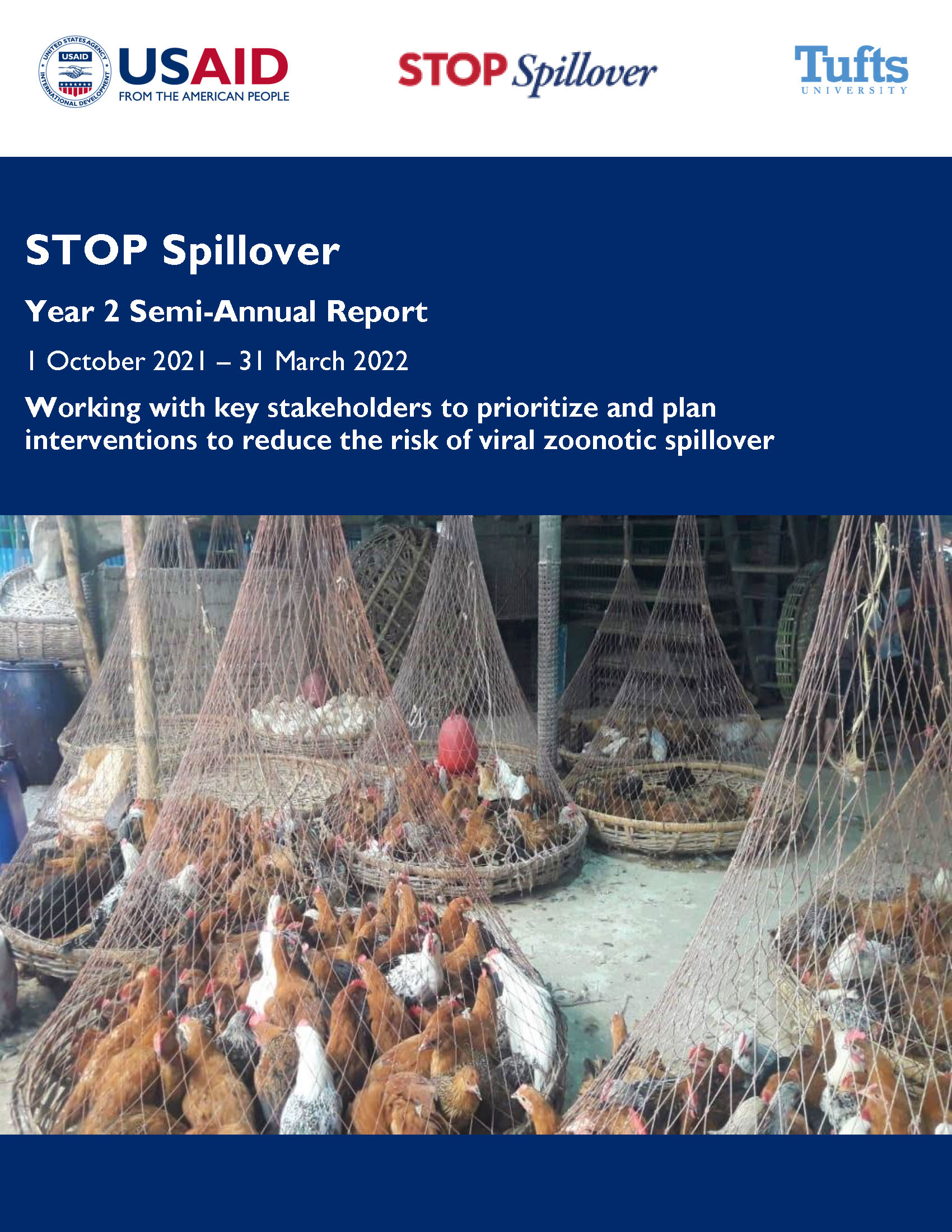
The participatory nature of the outcome mapping (OM) process applied by STOP Spillover leverages a broad range of in-country stakeholders to identify potential interventions to reduce the risk of spillover at prioritized interfaces, along with addressing knowledge gaps and challenges that limit intervention design.

STOP Spillover's first year was defined by its deep engagement with countries, key stakeholders, and communities. Their contributions and guidance have helped ensure that STOP Spillover's approach is inclusive and will have a sustainable impact on decreasing risk of zoonotic viral spillover.
The future of zoonotic risk prediction
Carlson, C.J., Farrell, M.J., Grange, Z., et al. Philosophical Transactions of the Royal Society B: Biological Sciences, 376(1837). https://doi.org/10.1098/rstb.2020.0358.
Sporadic Rift Valley Fever outbreaks in humans and animals in Uganda, October 2017—January 2018
Birungi, D., Aceng, F.L., Bulage, L., Nkonwa, I.H., Mirembe, B.B., Biribawa, C., et al. DOI: 10.1155/2021/8881191.
A year of genomic surveillance reveals how the SARS-CoV-2 pandemic unfolded in Africa
Wilkinson, E., Giovanetti, M., Tegally, H., San, J.E., Lessells, R., Cuadros, D., et al. Science, 374(6566): 423-431. doi: 10.1126/Science.Abj4336.
The origins and future of Sentinel: an early-warning system for pandemic preemption and response
Botti-Lodovico, Y., Nai, P., Nosamiefan, D., Stremlau, M., Schaffner, S., Agignoae, S.V., et al. Viruses, 13(8):1605. doi: 10.3390/v13081605.